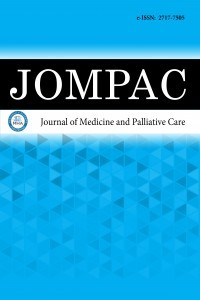1. Försch S, Klauschen F, Hufnagl P, Roth W. Artificial intelligence in pathology. Dtsch Arztebl Int. 2021;118(12):199. doi:10.3238/arztebl.m2021.0011
2. Chang HY, Jung CK, Woo JI, et al. Artificial intelligence in pathology. J Pathol Transl Med. 2019;53(1):1-12. doi:10.4132/jptm.2018.12.16
3. Moxley-Wyles B, Colling R, Verrill C. Artificial intelligence in pathology: an overview. Diagn Histopathol. 2020;26(11):513-520. doi:10. 1016/j.mpdhp.2020.08.004
4. Acs B, Rantalainen M, Hartman J. Artificial intelligence as the next step towards precision pathology. J Intern Med. 2020;288(1):62-81. doi:10. 1111/joim.13030
5. Rakha EA, Toss M, Shiino S, et al. Current and future applications of artificial intelligence in pathology: a clinical perspective. J Clin Pathol. 2021;74(7):409-414. doi:10.1136/jclinpath-2020-206908
6. Harrison Jr JH, Gilbertson JR, Hanna MG, et al. Introduction to artificial intelligence and machine learning for pathology. Arch Pathol Lab Med. 2021;145(10):1228-1254. doi:10.5858/arpa.2020-0541-CP
7. Shen Z, Hu J, Wu H, et al. Global research trends and foci of artificial intelligence-based tumor pathology: a scientometric study. J Transl Med. 2022;20(1):409. doi:10.1186/s12967-022-03615-0
8. Zhao J, Han Z, Ma Y, Liu H, Yang T. Research progress in digital pathology: a bibliometric and visual analysis based on Web of Science. Pathol Res Pract. 2022;240:154171. doi:10.1016/j.prp.2022.154171
9. Xiong DD, He RQ, Huang ZG, et al. Global bibliometric mapping of the research trends in artificial intelligence-based digital pathology for lung cancer over the past two decades. Digit Health. 2024;10: 20552076241277735. doi:10.1177/20552076241277735
10. Moran-Sanchez J, Santisteban-Espejo A, Martin-Piedra MA, Perez-Requena J, Garcia-Rojo M. Translational applications of artificial intelligence and machine learning for diagnostic pathology in lymphoid neoplasms: a comprehensive and evolutive analysis. Biomolecules. 2021; 11(6):793. doi:10.3390/biom11060793
11. Zhang T, Chen J, Lu Y, Yang X, Ouyang Z. Identification of technology frontiers of artificial intelligence-assisted pathology based on patent citation network. PLoS One. 2022;17(8):e0273355. doi:10.1371/journal.pone.0273355
12. Baxi V, Edwards R, Montalto M, Saha S. Digital pathology and artificial intelligence in translational medicine and clinical practice. Mod Pathol. 2022;35(1):23-32. doi:10.1038/s41379-021-00919-2
13. Abels E, Pantanowitz L, Aeffner F, et al. Computational pathology definitions, best practices, and recommendations for regulatory guidance: a white paper from the Digital Pathology Association. J Pathol. 2019;249(3):286-294. doi:10.1002/path.5331

